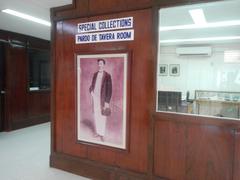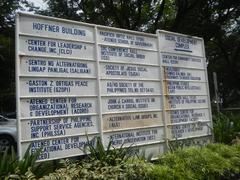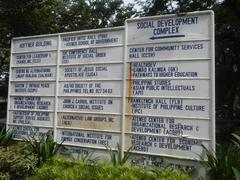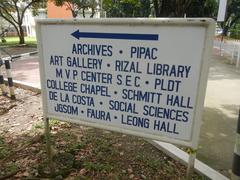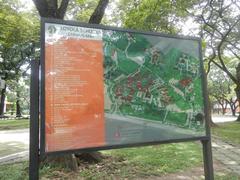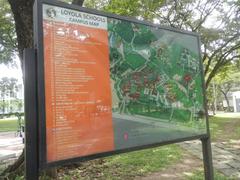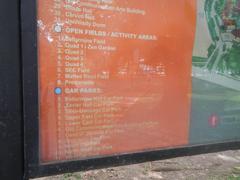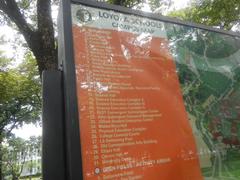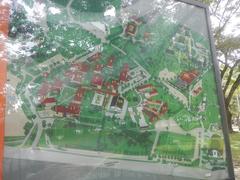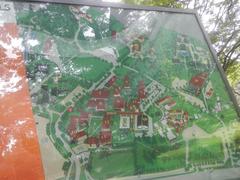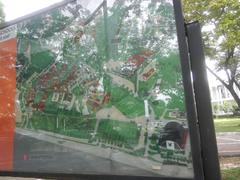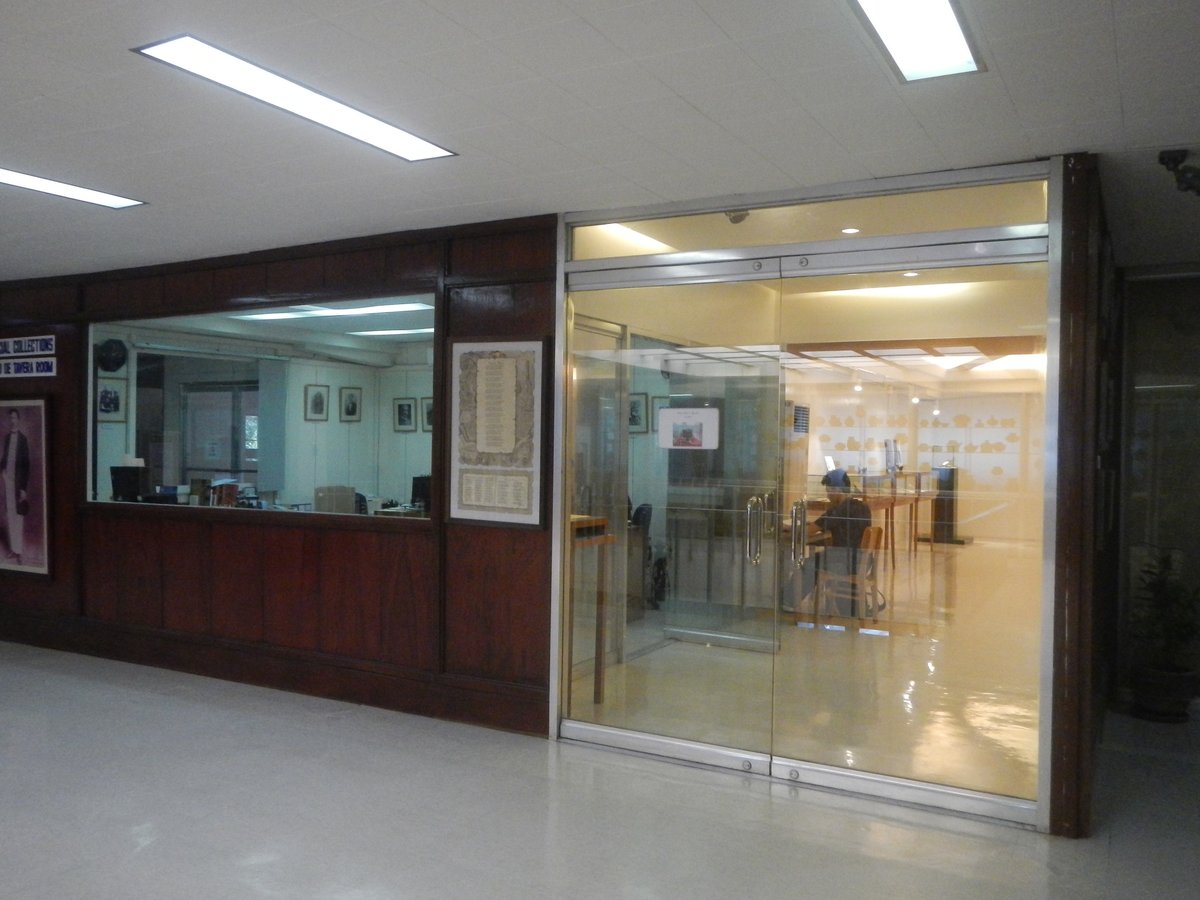
Ateneo de Manila University Visiting Guide – Metro Manila, Philippines
Date: 14/06/2025
Introduction: A Gateway to History, Culture, and Learning
Ateneo de Manila University is one of the Philippines’ most venerated and respected educational institutions, with a legacy steeped in over four centuries of Jesuit tradition. Its story began in 1590 as Colegio de Manila and has since mirrored the nation’s own evolution, from colonial times through contemporary society. Today, Ateneo’s Loyola Heights campus in Quezon City is not only a center for academic excellence but also a destination for travelers, history enthusiasts, and cultural explorers. Visitors can expect to encounter iconic sites such as the Church of the Gesù, the multidisciplinary Areté complex, and the renowned Rizal Library—all set amidst 83 hectares of verdant landscape.
This guide provides comprehensive information for planning your visit, including access protocols, hours, ticketing, mobility and accessibility tips, guided tours, and essential campus highlights. It also points to nearby Manila historical attractions, ensuring a well-rounded cultural experience. For real-time updates on schedules and events, consult the official Ateneo de Manila University website, alluniversity.info, and tripzilla.ph.
Table of Contents
- Introduction
- Early Foundations and Jesuit Beginnings
- Growth, Relocation, and Resilience
- Milestones in Academic and Social Development
- Architectural and Cultural Landmarks
- Visitor Information: Hours, Tickets, and Campus Access
- Top Campus Attractions
- Practical Tips and Accessibility
- Nearby Manila Historical Sites
- Notable Events and Annual Activities
- Frequently Asked Questions (FAQs)
- Conclusion and Visitor Recommendations
- References and Sources
Early Foundations and Jesuit Beginnings
Ateneo’s journey began in 1590 as Colegio de Manila, founded by Spanish Jesuits in the walled city of Intramuros. The school was initially dedicated to teaching Latin, rhetoric, and philosophy, laying the groundwork for Jesuit education in the region (alluniversity.info). After being expelled in the 18th century, the Jesuits returned in the 1800s, and in 1859, took over and renamed the school Ateneo Municipal de Manila. The institution transitioned to private administration in 1912, setting the stage for its emergence as a premier university (kids.kiddle.co).
Growth, Relocation, and Resilience
Ateneo’s resilience is evident in its response to adversity. After a major fire destroyed the Intramuros campus in 1932, the university relocated to Ermita, Manila. World War II brought further destruction, necessitating post-war reconstruction and a gradual move to Loyola Heights, Quezon City, where the main campus opened in 1952 (kids.kiddle.co). The Ermita site was later sold and redeveloped, symbolizing Ateneo’s capacity to adapt over time (factsheets.rennes-sb.com).
Milestones in Academic and Social Development
Ateneo has consistently led educational innovation in the Philippines. Notable milestones include the appointment of its first Filipino president, Fr. Pacifico Ortiz, SJ, in 1969, and the admission of female students in 1973 (kids.kiddle.co). The university played pivotal roles in national movements, such as the 1986 People Power Revolution. Expansion into professional fields followed, with the establishment of the School of Law (first in the country to offer the Juris Doctor degree in 1991), the Ateneo School of Government (1996), and the School of Medicine and Public Health (2007).
Architectural and Cultural Landmarks
Church of the Gesù
Completed in 2002, this modern church is an architectural icon and spiritual heart of the campus, inspired by the Filipino bahay kubo and Jesuit heritage. It is open daily for prayer, reflection, and university events (tripzilla.ph).
Areté: Innovation Hub
Areté is Ateneo’s center for creativity and innovation, housing art collections, galleries, performance spaces, and collaborative studios. It is a focal point for interdisciplinary activities and regularly hosts public exhibitions and events (tripzilla.ph).
Rizal Library
Named after Ateneo alumnus and national hero Jose Rizal, the Rizal Library is one of the country’s premier academic libraries, offering vast print and digital collections. Guided tours and public reading areas are available by appointment (Asia Research News).
Ateneo Art Gallery
The Ateneo Art Gallery is the Philippines’ first museum of modern art, showcasing works by National Artists and contemporary creators. It is open to walk-in visitors during posted hours (Spot.ph).
Visitor Information: Hours, Tickets, and Campus Access
- General Visiting Hours: 8:00 AM to 6:00 PM, Monday to Saturday; some venues may have specific schedules.
- Admission: No general entrance fee is required for campus entry. Certain venues (e.g., art exhibitions, guided tours) may require advance registration or tickets.
- Access Protocols: Visitors must present a valid photo ID at main gates (Gates 2, 3, or 3.5) and state their purpose. For most academic and administrative areas, prior coordination or appointments are required. Public venues like the Ateneo Art Gallery allow walk-in access with ID (Ateneo.edu).
- Campus Entry Procedures: Occasional visitors should submit a Campus Access Request form at least two days before their scheduled visit (Ateneo Health Protocols).
Top Campus Attractions
- Rizal Library: Academic resource center with extensive collections.
- Church of the Gesù: Modern landmark for spiritual reflection.
- Areté: Hub for the arts, innovation, and public engagement.
- Ateneo Art Gallery: Home to Philippine modern and contemporary art.
- Moro Lorenzo Sports Center & Blue Eagle Gym: Venues for sports and university events.
- Forested Areas and Green Spaces: Nature trails, open fields, and the Ateneo Wild Project for guided ecological tours (Ateneo Features).
- Matteo Ricci Hall: Recently renovated academic and social facility.
Practical Tips and Accessibility
- Getting There: The Loyola Heights campus is accessible via Katipunan Avenue, Quezon City—reachable by LRT-2 (Katipunan Station), jeepneys, buses, or private vehicles. Parking is available near Gates 2 and 3.5, but may be limited during peak hours.
- On-Campus Mobility: E-jeepneys connect major campus points. Maps are provided at gates and online (Ateneo.edu).
- Accessibility: Ramps, accessible paths, and restrooms are available. Coordination with the Office of Campus Facilities is advised for special needs.
- Dining: Multiple cafeterias and student-run food stalls are on campus; Katipunan Avenue offers diverse restaurant options (Spot.ph).
- Etiquette: Modest attire is expected, especially in religious spaces. Smoking and alcohol are prohibited. Respect quiet zones in libraries and chapels.
- Safety: Security personnel monitor entrances and patrol the campus. Emergency contacts are posted at key locations.
Nearby Manila Historical Sites
Enhance your visit by exploring Manila’s cultural landmarks:
- Intramuros: The original site of Ateneo, home to Fort Santiago, San Agustin Church, and Casa Manila.
- Rizal Park: A major site commemorating Jose Rizal and national history.
- National Museum Complex: Rich in Philippine art and heritage.
- Quezon Memorial Circle: Near Ateneo, offering gardens, museums, and recreation.
Additional nearby attractions include UP Diliman campus and a variety of local museums and parks (Quezon Memorial Circle).
Notable Events and Annual Activities
- UAAP Games: Major sporting events, especially basketball, are held at the Blue Eagle Gym and other venues (Ateneo News).
- Art Exhibitions and Festivals: Hosted regularly at the Areté and Ateneo Art Gallery.
- Environmental Programs: Tree-planting, clean-up drives, and educational workshops organized by the Ateneo Institute of Sustainability (Ateneo Features).
Frequently Asked Questions (FAQs)
What are the campus visiting hours?
Typically, 8:00 AM–6:00 PM, Monday to Saturday. Venues may have specific schedules.
Are tickets required for entry?
No general ticket is needed, but some events, tours, or exhibitions may require registration.
Is the campus accessible for persons with disabilities?
Yes, with ramps, accessible restrooms, and e-jeepneys. Coordinate ahead for assistance.
How do I get to Ateneo?
Via Katipunan Avenue in Quezon City, accessible by LRT-2, public transport, or private vehicle.
Can I take photographs on campus?
Yes, generally in public areas; always ask for permission in restricted or private spaces.
Are guided tours available?
Yes, by advance arrangement via the Visitor Center or Office of Admission.
Conclusion and Visitor Recommendations
Ateneo de Manila University stands as a living testament to Philippine history, education, and social progress. The Loyola Heights campus offers a harmonious blend of heritage landmarks, lush landscapes, and dynamic cultural life. Visitors can explore iconic sites like the Church of the Gesù, Areté, Rizal Library, and the Ateneo Art Gallery, while enjoying a safe, accessible, and enriching environment.
For the best experience, plan ahead by checking official Ateneo updates, scheduling guided tours, and coordinating campus access. Extend your exploration to nearby historical sites to gain a broader appreciation of Manila’s cultural tapestry. Stay connected with Ateneo’s evolving programs and community initiatives by following their social media channels and downloading the Audiala mobile app for navigation and event alerts.
Ateneo de Manila University is more than an academic institution—it is a gateway to the Philippines’ past, present, and future. Make it a highlight of your Metro Manila itinerary.
References and Sources
- A Comprehensive Guide to Ateneo de Manila University: History, Visiting Hours, Tickets, and Nearby Manila Historical Sites, 2025, alluniversity.info
- Ateneo de Manila University: Visitor’s Guide to History, Culture, and Tours, 2025, Institute of Philippine Culture (IPC)
- Ateneo de Manila University Campus Highlights: Visiting Hours, Tickets, and Must-See Attractions in Quezon City, 2025, Ateneo Features
- Ateneo de Manila University Visiting Hours, Tickets, and Campus Guide, 2025, Ateneo.edu
- Ateneo is PH’s top university in Times Higher Education World Rankings, 2025, inquirer.net
- Exploring the Green Oasis: Ateneo de Manila University’s Campus Iconic Spaces, 2021, tripzilla.ph
- Update No. 3 Health Protocols Guidelines: Campus Access Memo U2223, 2023, Ateneo.edu
- WhenInManila – Campus Tour: Ateneo de Manila University
- Spot.ph – Things To Do in Ateneo for Non-Students
- Wikipedia – Ateneo de Manila University
- Quezon Memorial Circle
- Asia Research News – Ateneo de Manila University
- Ateneo News
- Ateneo Contact Info


